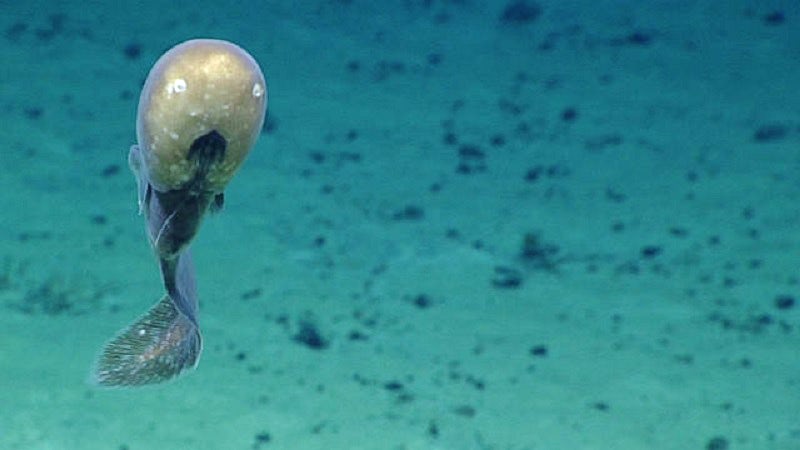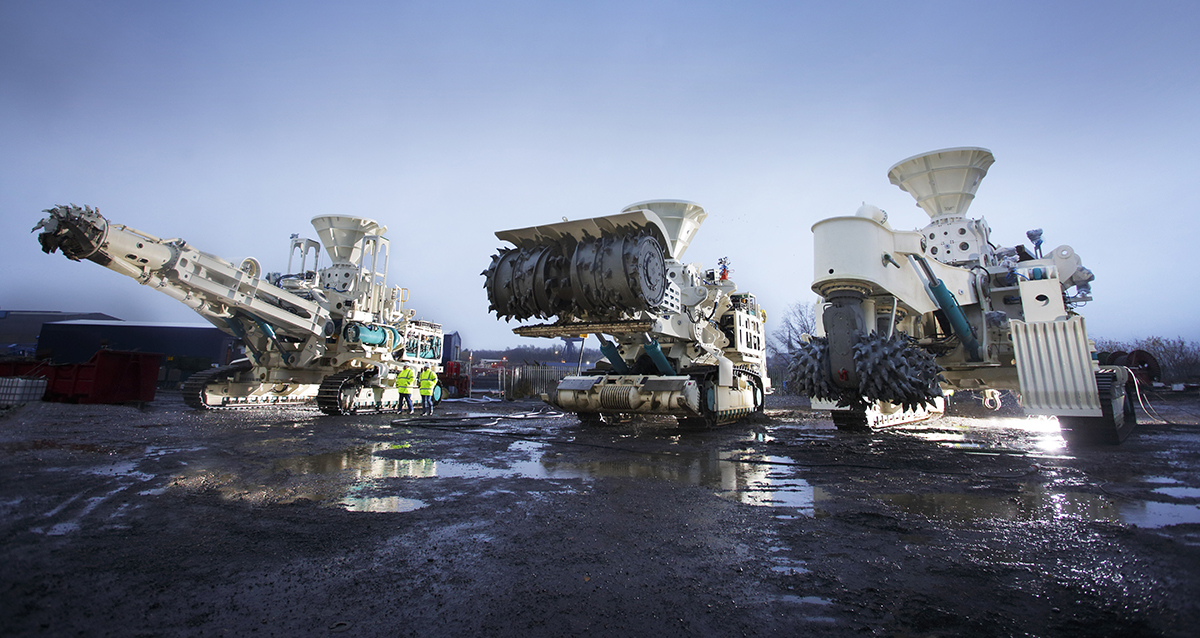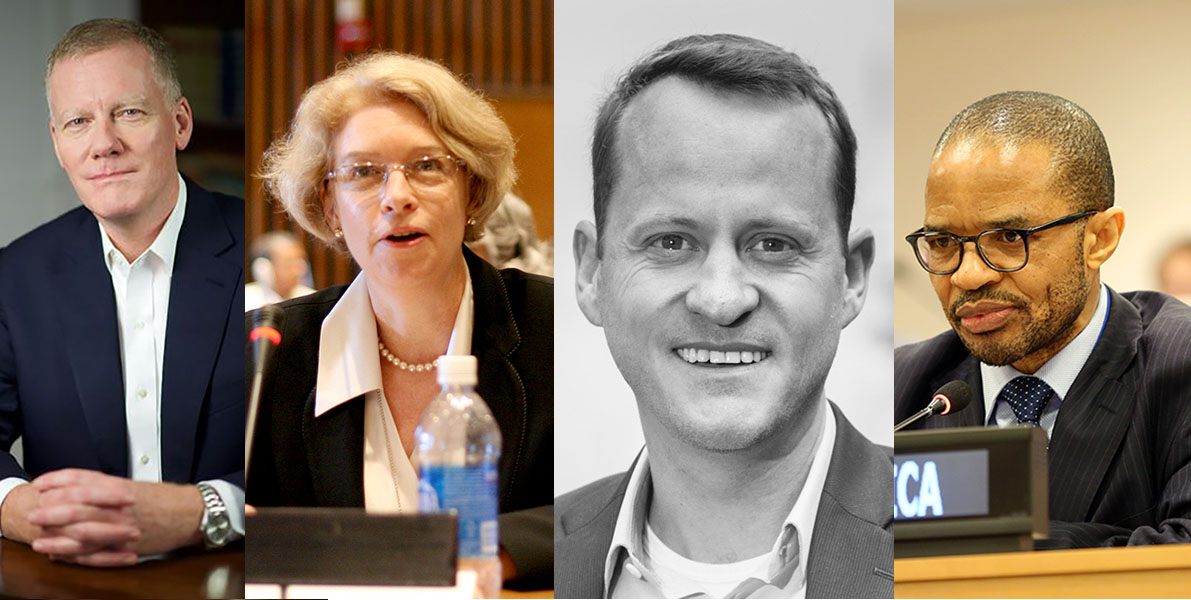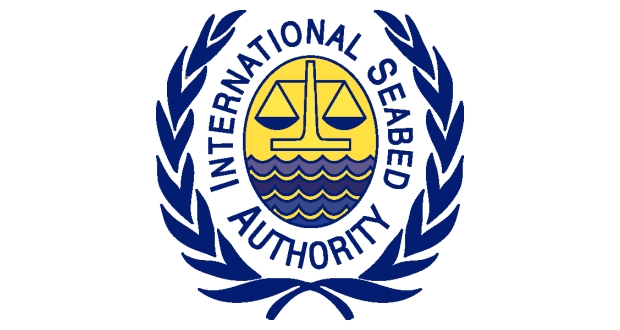Being deep-sea scientists is all about wandering into the unknown, strongly driven by our research motivations. Some people say that life is all about opportunities, and for us the opportunity to attend the Council meeting at 2nd part of the ISA Annual Session was one of those life changing experiences, a reinforcement of our passion for the unknown, for the deep, and for a better future.
Well before the opportunity to attend the International Seabed Authority (ISA) 25th Session in Kingston, masters student Maila Guilhon was investigating the potential threats to sea turtles in Ilhabela, a tourist island district off the coast of São Paulo, Brazil. She became interested in protecting areas located very far from people’s view but which were already reached by human activities, extending her studies miles from the coast, and that is how deep-sea mining became part of her life.
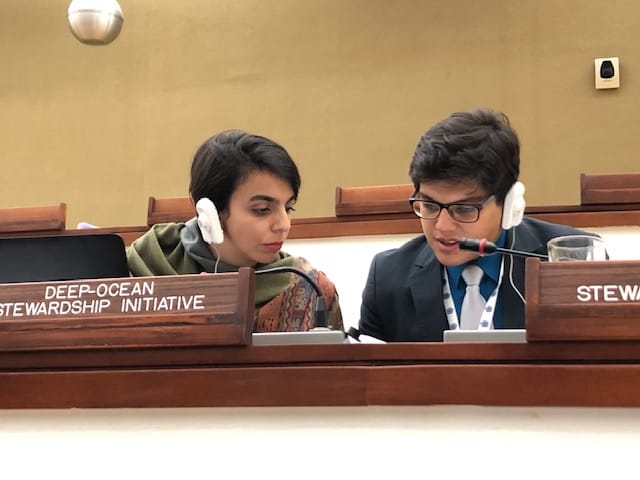
At the University of São Paulo, she became a Ph.D student and joined other researchers’ efforts in studying a region called the Rio Grande Rise, a seamount area located at the Southwestern Atlantic Ocean. The area is currently under an ISA contract for the exploration of cobalt-rich crusts by Companhia de Pesquisa de Recursos Minerais, a Brazilian state-sponsored geological research organization. This means that the company has a stake in future exploitation activities at the Rio Grande Rise.
Deep-sea research is still a growing and for many an unknown field in Latin America. Only countries like Brazil, Chile and Colombia have their own research vessels to conduct this type of research. Other countries figure out how to join efforts with partners. Costa Rica is a great example of this, a country with zero deep-sea research vessels,that have managed to do great science.
For Sergio Cambronero, becoming a deep-sea scientist was still a dream even 2 years ago. Coming from Costa Rica, he knew research vessels were out of their sight in terms of budget and thinking about a deep-sea expedition was something that seemed completely out of reach.
The greenest tiny country in the middle of Central America, Coast Rica has many interesting questions that are being addressed by local universities in conjunction with renowned scientists from all over the world. Being part of these research efforts, Sergio met Lisa Levin at a Deep Sea Symposium. She invited him to join the Deep Ocean Stewardship Initiative, a network of the most experienced and motivated researchers from across the globe to study and protect the deep sea. By that time, he could not imagine he was going to be called to the 25th International Seabed Authority meeting at Kingston, almost a year after he met Dr. Levin.
Given Maila and Sergio’s backgrounds, career objectives, and that both come from developing countries, DOSI selected them to be part of the delegation that attended the 2nd part of the ISA Annual Session in Kingston, Jamaica, in July 2019.
Reading ISA regulations, recommendations, or reports is nothing like being there! The ISA headquarters are everything you could expect from an official United Nations building. The place is full of art, science, glimpses of the most advanced technology but overall, the place is full of history, and stories; stories that you can just tell from being part of it, from a conversation with your national delegate to round tables with prestigious scientists that you have only read in papers. Being there makes you really feel like you are not only part of the discussions and challenges, but also part of the solutions. And yes, we can use science to make a difference! That is DOSI’s spirit. At the ISA we were DOSI too, so that’s how we felt! What an opportunity for two young Latin American scientists who want to put Latin America on the spotlight of good practices and environmentally wise decisions.
Once you are there, you quickly notice everything is very formal and diplomatic. Despite of purpose or interest, people greet and salute kindly, you feel very secure, like being inside of a fortress. For us, this was a fortress for all kinds of deep-sea discussions. A place where we could ask questions, clear doubts and share thoughts with people just like us, interested by the unknown world the deep sea represents!
The main sessions are full of solid statements and rigid protocol, you would need to grab a coffee to enjoy the pace of the sessions as everyone formulates interventions thoroughly, some of them already written months ago. As a new world for us, we should share that was a challenge to listen to what is being said on the floor, keep up with the documents, and think about new interventions. However, this is undoubtedly the most important place to learn how deep-sea mining decisions have been discussed.
Being at the ISA is not all about formalities. The side events are an alternative (and very exciting) environment where deep-sea science discussions and food were put together in a more relaxed environment. In these events you get to know a lot of interesting people by sharing tables and casual conversations among bites. In side events, we enjoyed a wide range of subjects covering topics such as about climate change on deep sea, physical oceanographic research, mining technology and marine spatial planning.
Even though the Annual Session holds a tight schedule, things may end up going differently from planned. That was what happened in the Council meeting we were part of. The discussions regarding the Draft Exploitation Regulations—the most important document that will dictate how exploitation activities should be conducted in the future—were interrupted because delegations had no consensus on its content related to several aspects such as environment, financial, and legal. A great part of it were related to key factors such as Standards & Guidelines and Regional Environmental Management Plans (REMPs), essential tools to implement a proper management of mineral resources from the deep sea. From that, several countries shared a common thought that the 2020 deadline should not interfere on the proper development of regulations. This only attests the intrinsic complexity of a process that concerns all humankind, and so should be carried forward carefully.
What an intense week!
The experience of participating in an ISA meeting is like being in a living deep-sea library. All you see in documents, papers, reports and interviews takes form in front of your eyes. So, if you ever have the opportunity to be at an ISA meeting, our advice is to treat this experience like learning a new language: read, listen, write and speak. But to make your experience even more valuable, we advise you to drink! Drink knowledge from the many sources you have the opportunity to reach, listen, reflect on the information and fit it in a place that makes sense to who you are, your values and what you expect for the future.
Our experience at the ISA meeting reinforced our belief that science is an important and strong propelling for decision making processes and so, we feel very inspired to be part of all transformation science can promote, especially for deep-sea environments.


